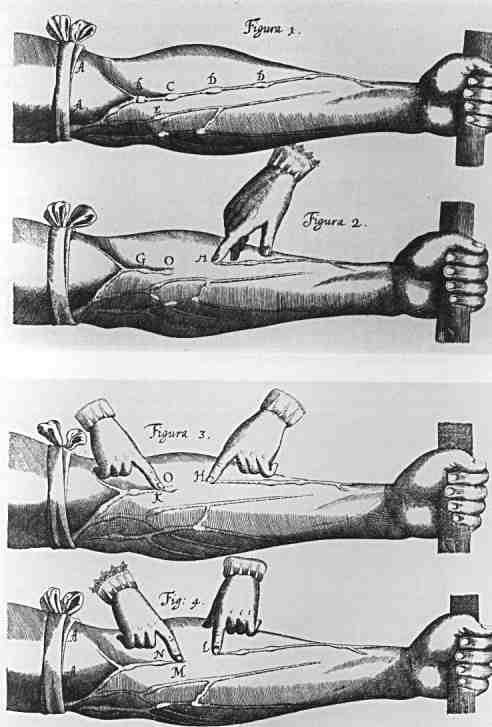Harvey
Part of the Circulatory System
As opposed to Galen, the workings of the heart were discovered to be more cut
and dry. Below you will see the key findings of Harvey’s work on the circulation
of blood.
- Heart
Form: The heart as a whole generally consists of
auricles, ventricles, and valves. Arteries and veins are connected to the
heart.
Function: The motion of the heart is that of expansion
and contraction, where upon expansion blood is drawn in and where upon contraction,
blood is sent out. The heart acts like a pump and is the main force behind
circulation of blood throughout the body.
- Arteries and Veins
Form: Resilient, expandable pipes
Function: The arteries carry blood away from the
heart to the lungs and other parts of the body. The veins carry blood to the
heart after it has been to the lungs and other parts of the body.
Relation to the Heart: When the heart contracts
the arteries expand to support the increased volume of blood and when the
heart expands the arteries relax. Likewise, the veins expand as the heart
contracts. The presence of valves in veins however keeps the blood from flowing
backward.

Picture depicting the presence of valves in veins.
- Auricles and Ventricles
Form and Function: There are auricles and two ventricles
in the heart. The auricles expand and contract at the same time. The ventricles
expand as the auricles contract because blood from the contracting auricles
is forced into the ventricles.

